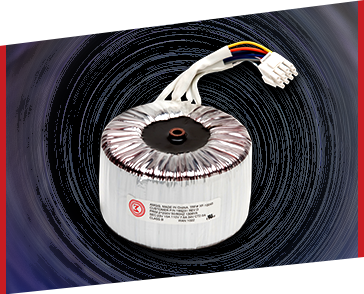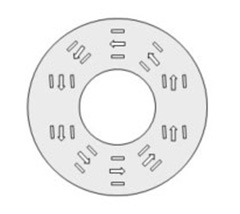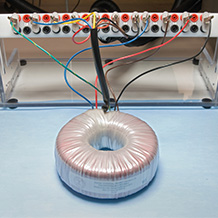Toroidal transformers provide flexible and efficient power, making them a prime choice for low kVA devices on various applications and equipment. The kVA devices that are rated low are those rated up to 15 kVA.
Industries that Use Toroidal Transformers in Applications or Equipment
Many industries benefit from using toroidal transformers in their equipment or applications. The ones listed below are common industries, however new applications and industries are identified everyday as technology and manufacturing continues to evolve.
Medical
The medical industry benefits from toroidal transformers on equipment for reliable use with medical professionals and patients alike, which may include CAT scan machines, hospital beds, medicine drip control, lab monitoring equipment and MRI machines. Medical equipment requires a power supply to meet very specific standards, and toroidal transformers can meet those needs.
Audio
Audio industry professionals use toroidal transformers for their audio output equipment, such as power amplifiers and tube headphone amplifiers, to benefit from their quietness compared to other transformers. Sound production can reach its best quality without the audible hum that standard laminated transformers produce.
Renewable Energy
For renewable energy, toroidal transformers used in applications result in fewer stray losses than traditional transformers. Toroidal transformers also work more efficiently, consistently meeting renewable energy equipment needs for an array of renewable energy applications such as solar power inverters, control equipment and power supply systems.
Manufacturing
Manufacturing applications benefit from toroidal transformers’ efficient output with many different types of industrial and manufacturing equipment, such as machine tool control systems, rail equipment, automobile equipment, lighting, military-grade and chemical industry equipment. At Amgis, we can custom-fit toroidal transformers to fit the precise needs of many different types of manufacturing and industrial applications.
What Is the Difference Between a Toroidal Transformer and a Standard Transformer?
A toroidal transformer has a particularly doughnut-like shape that fits up to 15 kVA-rated equipment. Standard laminated transformers are 20-to-50 percent larger with an audible hum. Toroidal transformers work more quietly, are compact, easier to mount, and more efficient than a standard laminated transformer.
Standard toroidal transformers offer a 90 to 95 percent efficiency rating, while standard laminated transformers provide less than a 90 percent rating. Higher efficiency ratings typically yield lower operating temperatures. Toroidal transformers work at a cooler temperature than standard laminated transformers. Standard laminated transformer cores, such as an EI type (pictured below), have gaps where more heat can escape. Comparably, standard toroidal transformer cores (pictured below) do not have air gaps, so heat is contained. This heightened heat containment is otherwise known as “lower leakage flux.”
Advantages of a Toroid Transformer
- Greater efficacy rate
- Absence of gaps = lower leakage flux
- Lower audible vibration
- More compact size
- Easier to mount
Toroidal Technology Basics
Compare toroidal transformers to standard laminated transformers and learn the advantages of the toroidal shape.
Learn More
Physical Size vs. Power Rating Table
View size and loss data for custom toroidal transformers.
Toroidal Transformer Sizing
A traditional laminated transformer is sizable compared to a toroidal transformer, and here is why. Using a toroidal core as opposed to a laminated core will reduce the transformer’s size and weight by 20 to 50 percent without affecting the overall performance.
A toroidal transformer’s lower weight and size make it work excellently in applications with size requirements. Better yet, at Amgis, we can create customized toroidal transformers to fit a space perfectly without affecting the power supply.
Designing To Reduce Power Losses in Toroidal Transformers, Cores, Inductors and Chokes
Learn here how a toroidal transformer works, stemming from its toroidal core to the transformer, inductor and choke. At Amgis, we produce low-frequency transformers with high-flux cores. Here is some insight into how and why we get there.
With a core metal, it is best to reverse the magnetization so it gets to zero magnetization. The process is known as the “hysteresis loop,” where a material has applied positive and negative magnetic fields. The intensity of magnetic flux is called “flux density,” and this increases as permeability increases.
In a choke or inductor design, designers want to avoid causing saturation of the toroidal core by increasing the AC or DC. The DC is constant and generally saturates the toroidal cores while moving them to a designated flux level. Transformers must have their maximum AC currents far below the saturation point. Generally, increasing voltage increases the flux density, which is how saturation gets reached.
Cores become saturated at a higher flux density when permeability is low, on the other hand. For maximum efficiency, equipment benefits from minimum losses when moving power from the primary to the secondary side. Because of this, ferrite cores are standard for high-frequency designs.
Read more about Amgis’ advanced toroidal technology to learn how our products provide high efficiency and performance.
An overview of Amgis Toroids custom power products.







